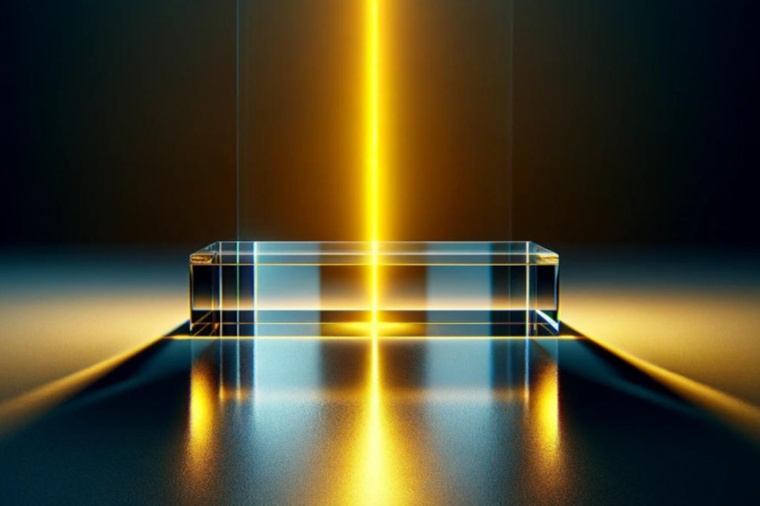How light behaves in formless solids
Amorphous solids selectively absorb light of different polarizations.
For a long time, it was thought that amorphous solids do not selectively absorb light because of their disordered atomic structure. However, a new study of researchers at the University of Ottawa (uOttawa) disproves this theory and shows that amorphous solids actually exhibit dichroism, meaning that they selectively absorb light of different polarizations. They have found that using helical light beams in disordered solids reveals dichroism, which is differential absorption of light.

This discovery contradicts prior beliefs and provides an opportunity to alter the way light interacts with these materials by changing the properties of the light itself. These findings also underscore the importance of short-to-medium-range order within disordered solids in influencing how materials react to light. Ravi Bhardwaj, head of the Extreme Ultrafast Photonics research group, doctoral students Ashish Jain and Jean-Luc Begin conducted this study in collaboration with Thomas Brabec and Paul Corkum at uOttawa’s Advanced Research Complex (ARC).
“The research was conducted by employing helical light beams carrying orbital angular momentum to probe the optical properties of amorphous and crystalline materials,” explains Bhardwaj. “By utilizing a birefringent liquid crystal plate, called a q-plate, developed by Karimi’s group, we were able to produce designer light fields with twisted wavefronts that describe a corkscrew pattern.” This research has broad implications and challenges current beliefs about the optical characteristics of amorphous solids. It also presents opportunities to control a material’s optical behaviour by using helical light beams. These findings are significant for multiple fields, including materials science, optics, and chiroptical spectroscopy.
“Our team developed a new method to show that non-crystalline solids can exhibit helical dichroism, which means they react differently to light that twists in different directions,” says Bhardwaj.“The experimental evidence was complemented by theoretical models developed in collaboration with Thomas Brabec, providing a comprehensive understanding of the observed phenomena. “The helical light served as an indirect probe of short-to-medium-range order in disordered solids that extends up to two nanometers. Our research will aid efforts to understand the mysterious nature of amorphous materials,” adds Ashish Jain and Jean-Luc Bégin.
This work significantly advances our understanding of the optical properties of solid-state materials. By demonstrating the existence of intrinsic dichroism in both crystalline and amorphous solids, this research paves the way for innovative applications and further exploration of the unique capabilities of helical light beams in probing and manipulating material properties. (Source: U. Ottawa)
Link: Extreme Ultrafast Photonic, Dept. of Physics, University of Ottawa, Ottawa, Canada











